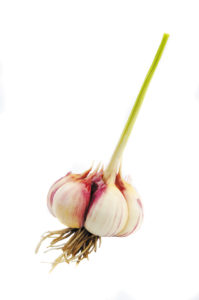Q. My Potato Vine and Bougainvillea suffered from frost in the recent cold spells. Most of the leaves have fallen off, so they look terrible. Is there anything I can do now to help them grow back?
A. It’s not unusual for Potato Vines and Bougainvillea to be damaged from frost and freezing temperatures during the winter. The cold will burn the leaves and or kill the plants. Cold acts as a desiccant pulling moisture from the plant tissue while a freeze causes the cell walls to rupture. As a result of these damaged cell walls, the plant defrosts too quickly, killing leaves and stems. Cold injury is more likely to occur the longer the temperature stays below thirty-two degrees after the sun rises. Right now, the recommendation is to do nothing. There is the possibility of more cold temperatures going forward. Instead, I’d wait until the danger of frost is over which is around March 15. You could also scratch the bark to see if it’s green. This would indicate that the plant is still alive. Personally, I’d still wait longer until you see some new growth developing. At this time that I prune off all the dead growth and fertilizer with Dr Earth Organic all Purpose plant food to encourage the new growth.
Q. I have an Azalea that has been in the ground for twelve years and it’s not growing. When I planted it originally, I didn’t disturb the roots. I’ve since learned I should have. Can I now dig it up, spread the roots and replant it in the same spot? It has tremendous sentimental value.
A. Yes, I would replant. Your Azalea is slowly strangling itself, so you need to break the circular pattern of the roots for the plant to survive. March is an excellent month to dig up plants, trim their roots and then transplant. Even, if you’re going to replant it in the same location. This technique is called “Root Pruning.” Root Pruning is also recommended for container plants such as citrus, Japanese Maples, roses and many other plants that have been in the same container for over twenty-four to thirty-six months. In your case, I’d dig around the plant with a round nose shovel until you gently lift the root ball out of the ground. It should come out quite easily as there is should be little rooting into the native soil. With a sharp knife or pruning saw, trim away two to three inches off the sides and remove three to four inches off the bottom of the root ball. Before replanting, soak the root ball in a bucket of water with Liquinox Starter with B1 or similar product. Liquinox Starter with Vitamin B-1 helps promote feeder root growth and reduces transplant shock. The root ball should be held down under the water until the water stops bubbling. This forces all the air out of the root ball ensuring that it’s saturated. The new planting hole should be two and half times as wide as the original root ball and six inch deeper. This is to accommodate the many surface roots. The native soil is amended with organic matter or you could use one of the prepared planting mixes for shade loving plants at a 50/50 ratio. Next, center the Azalea in the hole with the top of the root ball one half inch above the soil surface. This allows for settling and prevents the plant from being planted too deep which is a critical planting mistake made by many. Two week after transplanting, I’d begin fertilizing with an Azalea, Camellia and Rhododendron Food and continue feeding it monthly until October.
 Q. Last November, I planted garlic for the first time. It is now almost twelve inches tall. When does it mature?
Q. Last November, I planted garlic for the first time. It is now almost twelve inches tall. When does it mature?
A. Garlic should not mature for another three to four months. As harvest time approaches, the plants will turn yellow and brown. When forty percent of the foliage has discolored, you stop watering the plants and bend the foliage over, parallel to the ground. Once the foliage turns completely brown, the garlic is manually removed. I’d loosen the soil with a spading fork first and be careful as garlic bruise easily.